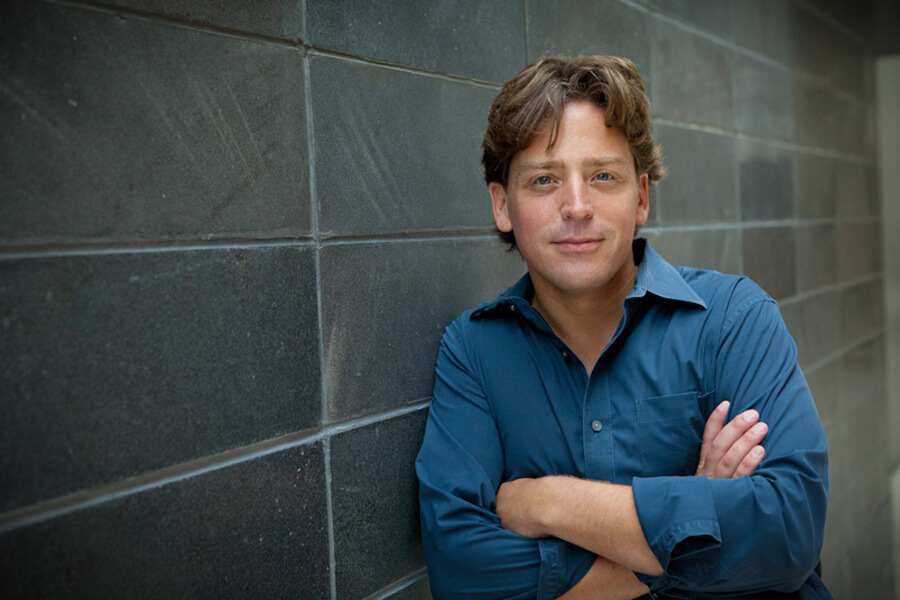
My first experience with the music of Brian Current dates back to my undergraduate days, when a colleague handed me a CD of his orchestral music, This Isn’t Silence. My reaction was one of shock and disorientation: it was not only my first experience with Current’s music, but with the extreme and endless possibilities of the contemporary orchestral sound. Current’s music seems to always be in flux: either speeding up or slowing down, exploding in bursts of orchestral colour, or atomizing in every musical direction possible. Since This Isn’t Silence, Current has produced dozens of orchestral works and music for chamber ensemble and the opera, including the recent Canadian premiere of Airline Icarus, an opera about a Korean passenger plane tragically shot down by paranoid Soviet militants in 1983. Speed, energy and colour seem to be central ideas in Current’s music, but successfully bringing these qualities to life in a piece of music can be a long, scrutinizing process, filled with revising and re-calibrating. Current explains everything in detail below.

PLAYLIST
The Seven Heavenly Halls (2016) for Tenor Solo, Chorus and Orchestra — “Premiere October 19, Montreal Symphony Orchestra and Chorus, Kent Nagano conductor.”
Missing Women (2016-2017) — “Chamber opera about Canada’s missing and murdered aboriginal women – premiere City Opera Vancouver and Pacific Opera, November 2017, Charles Barber conductor.”
The River of Light (2016-2018) — “A multi-movement cycle for soloists, choir and orchestra. The music is about transcendence and is based on the texts of different traditions (Hindu, Christian, Jewish, Inuit, Sufi, Maori, Chinese) that describe mystical journeys towards an exalted state – premiere Vancouver Bach Choir and Vancouver Symphony 2018, Les Dala Conductor.”
#1. How do you write your music?
For larger pieces, I find that most composers (and writers and painters, etc.) almost always work slowly and methodically. Sure, at times there are fantastic bursts of spontaneity but overall, creating bigger pieces is a marathon and not a sprint. There’s a great little book called Daily Rituals that talks about the routines of our favourite artists and composers throughout history and the overall theme seems to be that it’s the long game that counts.
A beautiful thing about our tradition is that every composer writes differently. For me, I’ve learned that the works are generally more successful if the computer is kept out of the process until the very end. I’ll typically spend about a month or so at the piano, improvising, making drawings and trying to find a way through the piece. Eventually, this will turn into a harmonic structure which I’ll write out by hand while sitting at the piano. Then there comes a period away from the piano, say about 2-3 months, where I will sit at a desk and write out everything by hand. Usually, I’ll put completed material up on the wall so I know where I am in the music. Finally, when as much detail as possible is done by hand, and the deadline is looming, I’ll transfer it into Finale, which takes a couple of weeks. Then it goes to copyist for parts – by the way, the best copyist in the universe is David Nichol — and we proofread everything together and get it in by the deadline.
#2. When do you write your music?
There’s a beautiful mystique about composers who dash things out in the middle of the night. I wish! Unfortunately, for me, it’s the slow and steady slog that gets the job done. I’ll usually compose from 9 until 3 or so, Tuesdays to Fridays. Getting to it first thing in the morning is important. Mondays (my RCM day) and afternoons other days I’ll do conducting things, artistic advisor/director things, admin things, and email. Evenings and weekends are family time, except during deadlines about twice a year when I’ll go ballistic and work all hours and weekends for a couple of weeks or so.
#3. In this age of plurality, composers are now pulling inspiration from many different places (pop music, world music, mathematics, visual art), not just the classical canon anymore. How valuable is the classical canon to you as a contemporary composer?
The most inspiring thing for me is everyone’s music, usually 21st–century orchestral and chamber rep, but also electronic music, Peking Opera, Gamelan, Tuvan Throat Singing, Georgian and Bulgarian folk music, all of which was jaw-dropping to me the first time I heard it. The classical canon is wonderful, but is most inspiring not for materials, but in that it shows a level of excellence that we should all strive for. I play my kids the Goldberg Variations every night as they go to sleep, and we are still not tired of it after many years.
#LUDWIGVAN
Want more updates on Toronto-centric classical music news and review before anyone else finds out? Get our exclusive newsletter here and follow us on Facebook for all the latest.
- PREVIEW | U of T Faculty of Music Brings Salvatore Sciarrino to Toronto - January 27, 2017
- PREVIEW | The Music Gallery Gears Up For The Viking Of 6th Avenue - November 25, 2016
- SCRUTINY | Esprit Orchestra Salutes The Legacy Of R. Murray Schafer - October 28, 2016



